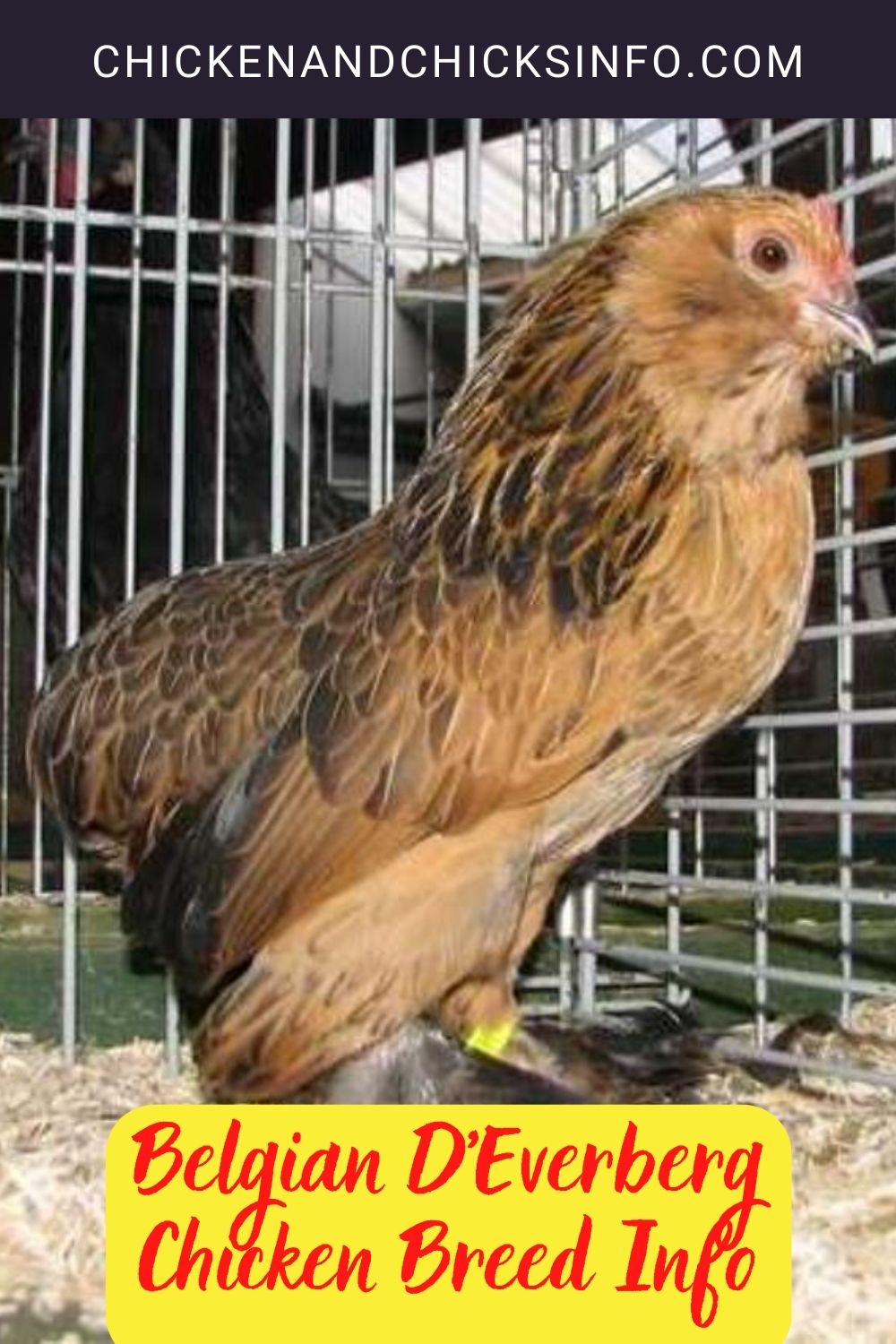This breed is essentially a rumpless version of the Belgian d’Uccle chicken, although it is a separate breed. They are true bantams, meaning that they have no larger counterparts.
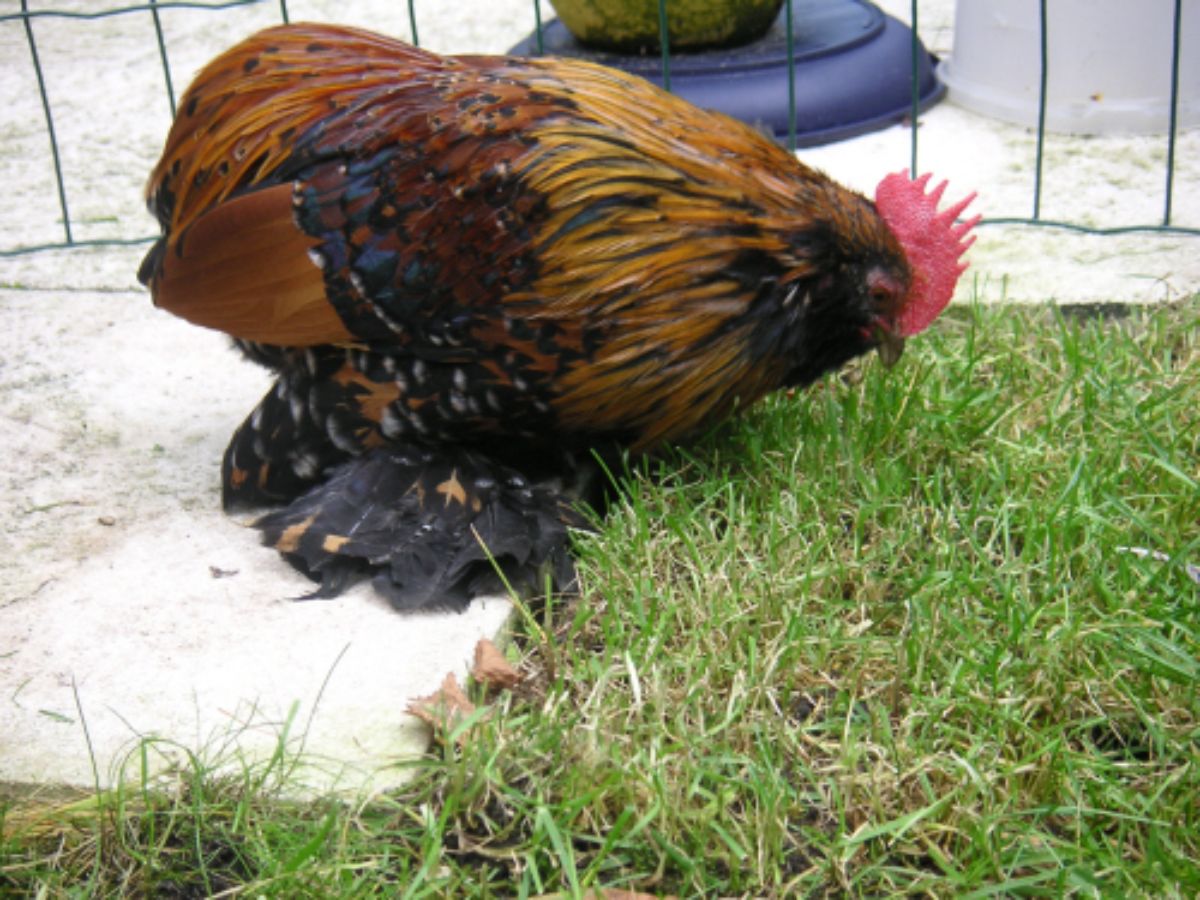
Like most bantams, the D’Everberg is best kept as a pet or show bird. They are too small to be used for meat purposes, and their eggs are small and laid infrequently. Hens do not go broody often, but when they do, they make excellent mothers.
Jump to:

Belgian D’Everberg Chicken Breed Quick Info
Belgian D’Everberg Chicken Description
| Belgian D’Everberg Type/Size: | Bantam |
| Feather Color: | Varies |
| Leg Type: | Feathered |
| Leg Color: | Varies |
| Skin Color: | White |
| Belgian D’Everberg Ease of Raising/Keeping: | Medium |
| Belgian D’Everberg Special Care Needs: | Yes |
| Is the Belgian D’Everberg breed a common, rare, or protected breed of chicken? | Rare |
Belgian D’Everberg Use
| Meat | No |
| Eggs | No |
| Dual Purpose | No |
| Belgian D’Everberg Temperament: | Friendly, calm, docile |
| Belgian D’Everberg Ability/Likelihood to Free Range: | No |
Belgian D’Everberg Egg Production
| Egg Color | White |
| Egg Size | Small |
| Estimated Number of Eggs Per Year | 100 |
| Likeliness to Brood Eggs/Raise Chicks | Low |
Belgian D’Everberg Meat Production
| Dressed Weight Male | N/A |
| Dressed Weight Female | N/A |
Belgian D’Everberg Climate Tolerance
| Heat | Moderate |
| Cold | Moderate |
Belgian D’Everberg Age to Maturity
| Number of Months to Reach Full Size | 6 Months |
| Number of Months to Start Egg Laying | 5 Months |
| Number of Weeks/Months to Reach Meat Harvest Size | N/A |
Belgian D’Everberg Size at Maturity
| Male | 2 lbs |
| Female | 1.5 lbs |
Origins of Belgian D’Everberg Chicken
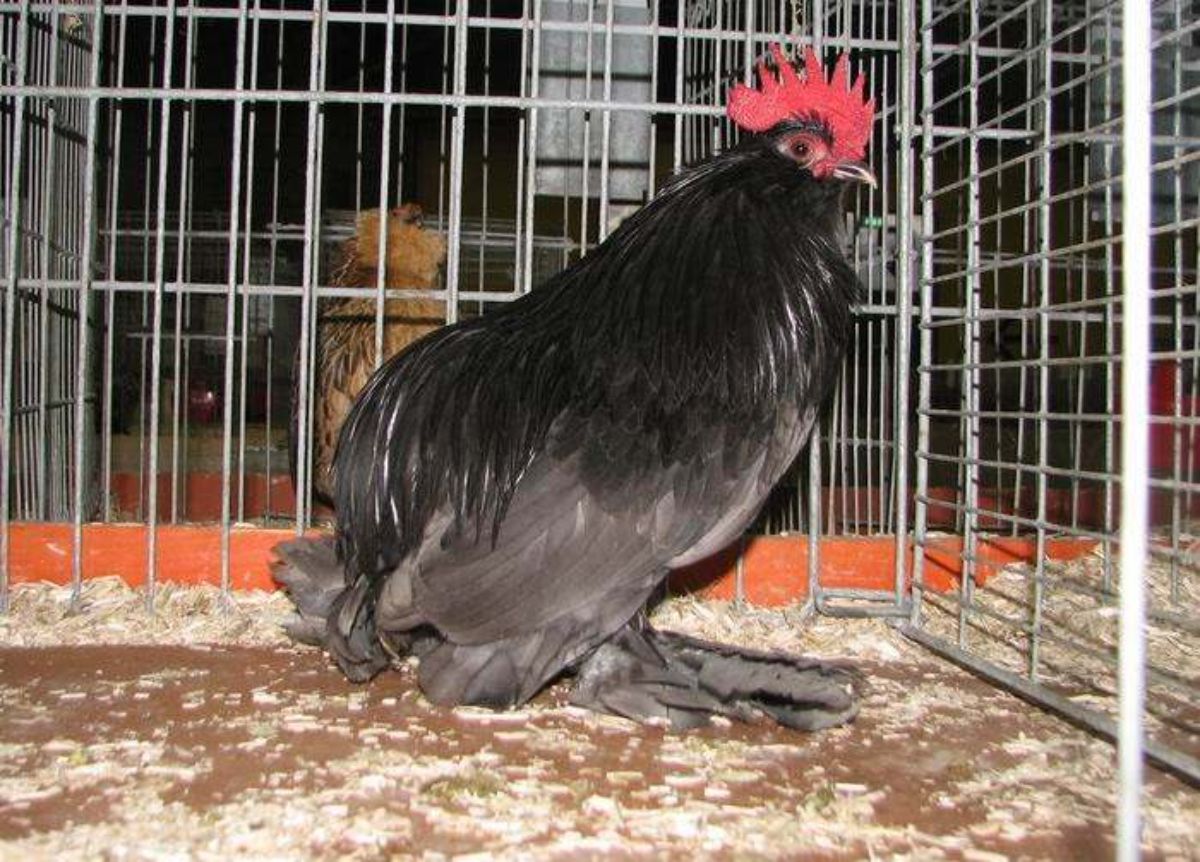
The Belgian D’Evergberg chicken breed was developed in 1906 by a man named Robert Pauwels at his castle of Everberg, which is located near Brussels in Belgium. While the exact cross of breeds he used is unknown, it is likely that he crossed a Belgian d’Uccle chicken with a rumpless breed (such as the Belgian de Grubbe).
This breed rose in popularity before World War I, but following the War, the bird almost disappeared. There was an attempt to bring it back several times throughout the 20th century, but success was minimal.
Today, they remain a very rare species of chicken, especially outside their home country of Belgium.
Some Things to Know About Belgian D’Everberg Chicken
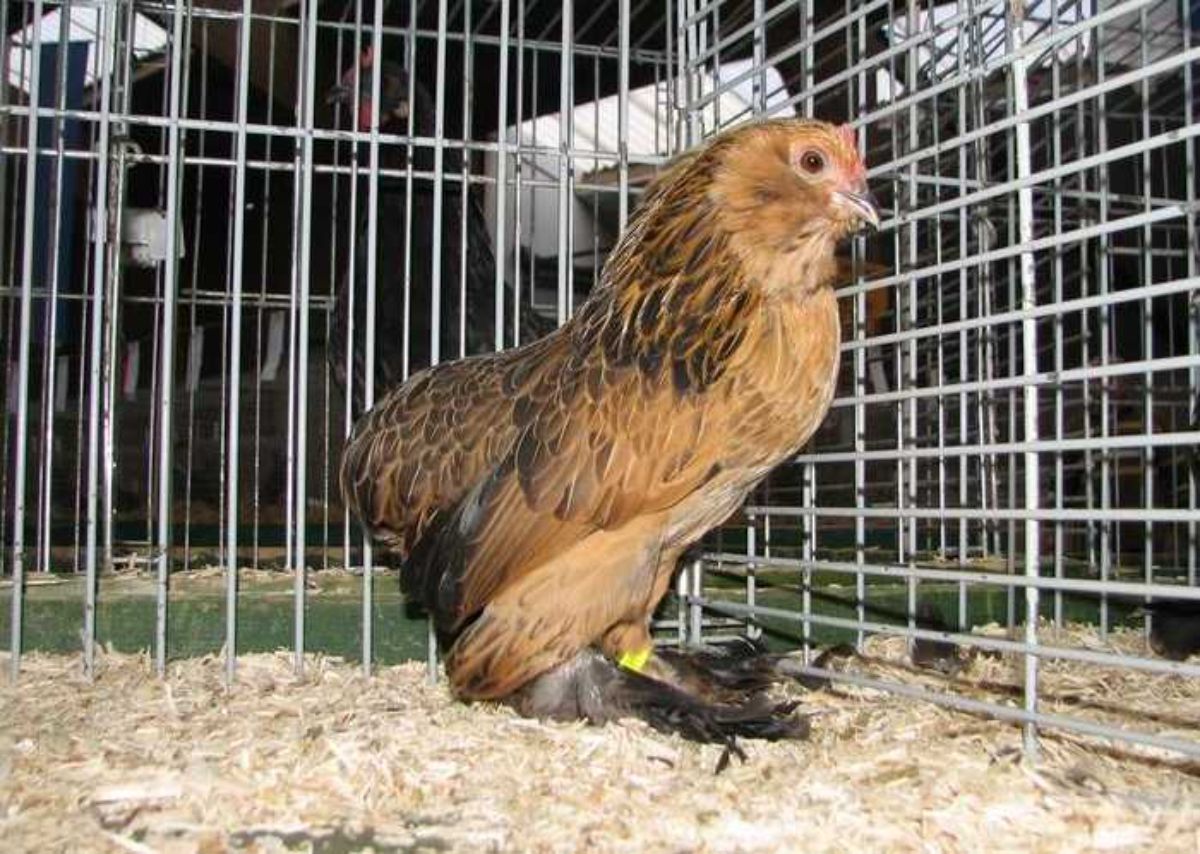
This chicken comes in many different color varieties. The most popular colors that you’ll find are the Mille Fleur and the Porcelain D’Everberg chickens. There are many other colors that this breed comes in, though, including black, blue, white, mottled, quail, golden neck, and cream Columbian.
The Belgian D’Everberg is known for its rumplessness, meaning that it has no tail feathers. They also have highly feathered legs and a single red comb. They are a true bearded bantam, meaning that they have feathers around the base of their head that resemble a fluffy beard.
How Easy is it to Keep Belgian D’Everberg Chickens?
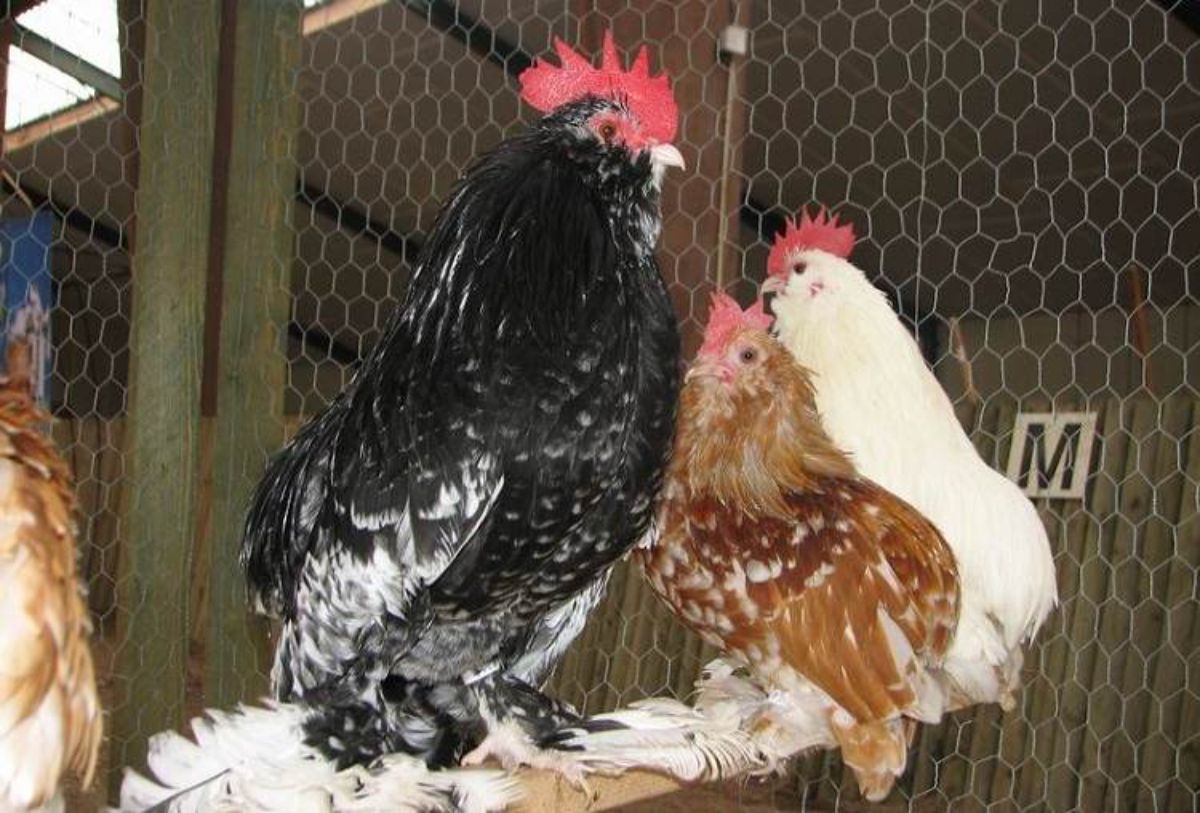
This breed does very well in confinement and does not require large amounts of space to wander. As long as they have a small area to scratch in, they are happy. Because of their feathered legs, they do best in confinement. This prevents their feathers from becoming muddy and matted.
When it comes to their temperament, the Belgian D’Everberg chicken is one of the friendliest birds around. They are known to be docile, calm, and love human attention. They are wonderful pet chickens for children due to their gentle nature and small size. They are also easy to tame and use for show purposes.
However, it is important to note that roosters can be aggressive during their mating season.
Overall, the Belgian D’Everberg makes an excellent addition to any backyard chicken flock.
Special Care and Considerations for Belgian D’Everberg Chickens
As with all chickens with a single comb, frostbite can be an issue in the wintertime. A swipe of vaseline can help to protect your D’Everberg’s comb from freezing in low temperatures. Due to their small size and feathered legs, these birds require a bit more care than other breeds of chickens. They do best in confinement so that their environment can stay clean and climate-controlled
